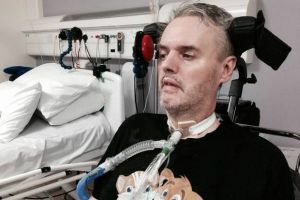 A locked-in syndrome, or as it is often called, isolation syndrome is a particular disease in which a person is partially or completely unable to respond to any external stimuli.
A locked-in syndrome, or as it is often called, isolation syndrome is a particular disease in which a person is partially or completely unable to respond to any external stimuli.
For example, he can hear the voice addressed to him, touch, see what is happening around, but no reaction to all this should not happen. Thus the person is in full consciousness, understands that occurs.
Depending on the degree of damage, the gift of speech, the ability to express emotions by facial expressions, the limb movements may be lost. From the side it seems that the patient has a coma condition( this syndrome is also called a wakeful coma), but in fact it is not.
The only thing that usually does not lose the ability to move is the eyes, and it is through them that one has to find a common language with the person. The ability to flash still remains. It was thanks to these two actions that scientists were able to establish a special system through which people with the syndrome of a locked person can have a connection with the outside world.
Stages of isolation
Scientists share such basic degrees of development of the stone man syndrome: 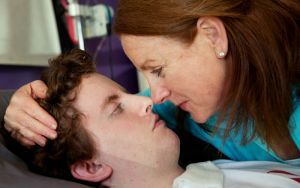
- Partial .In this case, the person can retain the ability to some movements and actions, which simplifies his daily life and gives some opportunities not to break away from the rest of the society.
- Classic .As is clear from the title, this variant is found most often and it is about it that most information was collected. In the case of the classic syndrome of the locked person, the patient completely loses the ability to move and express emotions by facial expressions, to speak. The only movements available to him are flashing and moving with his eyes.
- Full .In this case, even the possibility of flashing is lost.
There are many factors that can cause this phenomenon. Let us consider them in more detail.
Causes of development of the closed syndrome
As is clear from the nature of the disease, it is primarily associated with the work of the nervous system and brain. It is they who completely control the muscular activity of a person, the ability to move, speak and virtually all other actions.
It is noticed that people who for some reason have lost sensitivity on some part of the skin, weakly or at all do not react to her irritation with injections, fire. But unlike such cases, the isolation syndrome does not lead to loss of skin sensitivity - the patient can feel touch, pain from pricking, etc.
The main causes of the onset of closed-body syndrome are the complications of such neurological diseases:
- A cerebral infarction of the brain region. This disease is characterized by the fact that it affects certain areas of the brain. In some cases, even after curing, important areas never start to work in a new way, forcing a person to remain completely stuck in action. Depending on which areas are most affected, there will be interruptions with various functions, for example, loss of speech, lack of facial expression, inability to wiggle limbs.
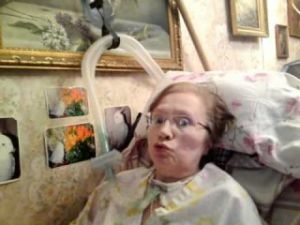
- Amyotrophic lateral sclerosis .This is a very dangerous incurable disease that slowly but inexorably develops, leading to a gradual disruption of the normal functioning of the central nervous system.
- Myasthenia gravis .This disease occurs due to the gradual weakening of the immune system, which manifests itself in the fact that the human muscular system is extremely quickly tired of active activities. Only a small physical load causes terrible weakness and trembling in the whole body. There are cases when myasthenia gravis accompanies isolation syndrome in the final stages of its development.
This is not the whole list of diseases that lead to the formation of a locked syndrome. Here you can also include Guillain-Barre syndrome, myelinolysis, myoplegia and some other diseases.
Symptoms and typical condition of the patient
As for the question of the symptoms that a wakeful coma manifests, there may be many and quite diverse, depending on the degree of development of the disease and other factors complicating the picture. After all, the syndrome usually acts as an accompaniment of more serious diseases, which also have a lot of their symptoms.
In general, the symptoms of a blocked person's syndrome are very eloquent:
- The ability to move the lower part of the face of is lost. It is only possible to wiggle or blink, although, as already mentioned, and in severe cases the patient can not even blink.
- Inability to chew .Since the muscles of the lower part of the face lose the ability to work, the chewing process becomes impossible. Based on this, a person has to be transferred to various alternative methods of feeding. It is clear that swallowing in this case is also not available to the patient.
- There are times when patients lose the ability to even breathe normally .They are promptly transferred to special breathing apparatus, which becomes the main source of life for them.
- The loss of the ability to move the limbs of the is a must. A person becomes completely immobile and not independent, he needs constant careful care and attention.
Looking at these symptoms, it may seem that the condition of the patient with the isolation syndrome necessarily leads to death and it is only a matter of time. But often it is different - the sick still manage to get out and return to a more or less normal life. The main thing is that for this it is necessary - the mind and the ability to perceive the surrounding world, they always remain.
What is modern medicine capable of?
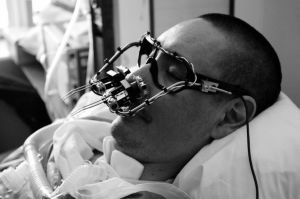 It would seem that it is virtually impossible to cure such a disease, it is too powerful for it to have a negative impact. But in fact, scientists are making attempts to get out of this situation, and in some cases they have already achieved considerable success.
It would seem that it is virtually impossible to cure such a disease, it is too powerful for it to have a negative impact. But in fact, scientists are making attempts to get out of this situation, and in some cases they have already achieved considerable success.
The main goal of treating the syndrome is if not complete recovery, then maintaining a person's life and eliminating dangerous symptoms.
One hundred percent mortality is observed if the syndrome has arisen as a consequence of another, incurable disease( eg, ALS).But in cases where the original was the reason that can be fully handled, there may be cases of even full recovery, although they are extremely rare.
Treatment of a blocked person's syndrome consists of the following steps:
- Providing high-quality nutrition for , rich in essential substances. If the patient has lost the ability to chew and
 to swallow, use special methods of feeding a person. It is very important that it is given to eat and how much nutrition is balanced.
to swallow, use special methods of feeding a person. It is very important that it is given to eat and how much nutrition is balanced. - High level of hygiene maintenance .Since the patient can not move independently, he does not have the opportunity to go to the toilet on time or change linen. This has to be done by other people, and on how responsibly this happens, the condition of the patient will depend.
- It is important to carry out therapy and treatment of the underlying disease that caused the syndrome. Only in this way is there a chance to put a person to his feet to the full.
Naturally, the primary importance in the treatment belongs to medical drugs.
Most often used:
- preparations from the class of glucocorticoids;
- widely use antihistamines such as diphenhydramine or Suprastin;
- applies plasmapheresis - this is a special method of therapy based on the introduction into the veins of a patient with immunoglobulin;
Stories that inspire hope
Despite the cruel statistics, there are cases of a truly miraculous recovery from this ailment. Here are just a couple of amazing examples.
A boy named Martin Pistorius lost the ability to move and express emotions in just 12 years. The only thing he could do was look at his favorite cartoons and endure the healing procedures. In the end, he was able to get out of all this, he became a happy husband and the author of an interesting book.
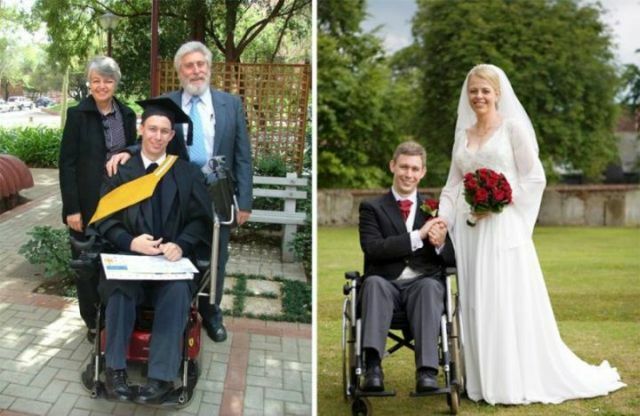
Another interesting example, familiar to everyone - Stephen Hawking. This person, unable to move or even speak, has become one of the most popular popularizers of science.



